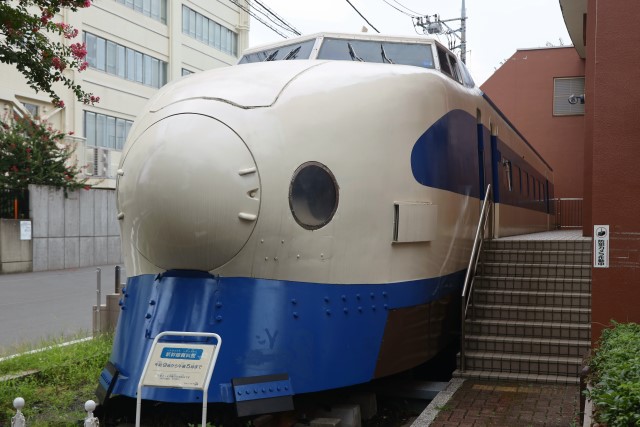Unit 951-1 of the EMU JNR 951 series is exhibited in the Shinkansen Museum
Japanese railways are going to mark the 150th anniversary on October 14th this year. Japan's first railway line was opened between Shimbashi and Yokohama in 1872. The biggest changes then came in 1964. The bullet train, namely Tokaido Shinkansen, was opened between Tokyo and Shin-Osaka with a maximum speed of 210 kilometers per hour. Furthermore, the Sanyo Shinkansen was inaugurated between Shin-Osaka and Okayama in 1972.
The EMU JNR 951 series is a prototype model for the Sanyo Shinkansen. It was developed by the Japanese National Railways (JNR) in 1969. The goal of the 951 is to increase the maximum operating speed on the Sanyo Shinkansen from 210 to 250 kilometers per hour. For that purpose, the 951 has a longer "nose" than that of the 0 series on the Tokaido Shinkansen. Regarding the technical specifications, JNR increased DC motors' output from 185 to 250 kw. Shafts of the bogies use hollow axles for weight saving.
The 951 attained a maximum speed of 286 kilometers per hour on a test run in 1972. After operating for 11 years, the 951 was retired from the track in 1980. Currently, one unit, named 951-1, is preserved at Shinkansen Museum in Kokubunji City, Tokyo Metropolis. This small museum is located next to the Railway Technical Research Institute, and operated by the City of Kokubunji. More importantly, 951-1 is treasured by local volunteers including children. They wash 951-1 twice a year. Thanks to the local people, I thoroughly enjoyed this precious vehicle.
Front view of unit 951-1, prototype Shinkansen train
Official information, "spring cleaning" of unit 951-1, Kokubunji City (in Japanese):

